12 Magnificent Flowers That Start With M + Growing Guides

This post follows our research editorial guidelines.

Welcome to a mysterious journey through the floral kingdom, where the magic of 12 magnificent flowers that start with the letter M awaits you.
These blossoms will transform your garden into a mesmerizing oasis with their captivating beauty and unique characteristics.
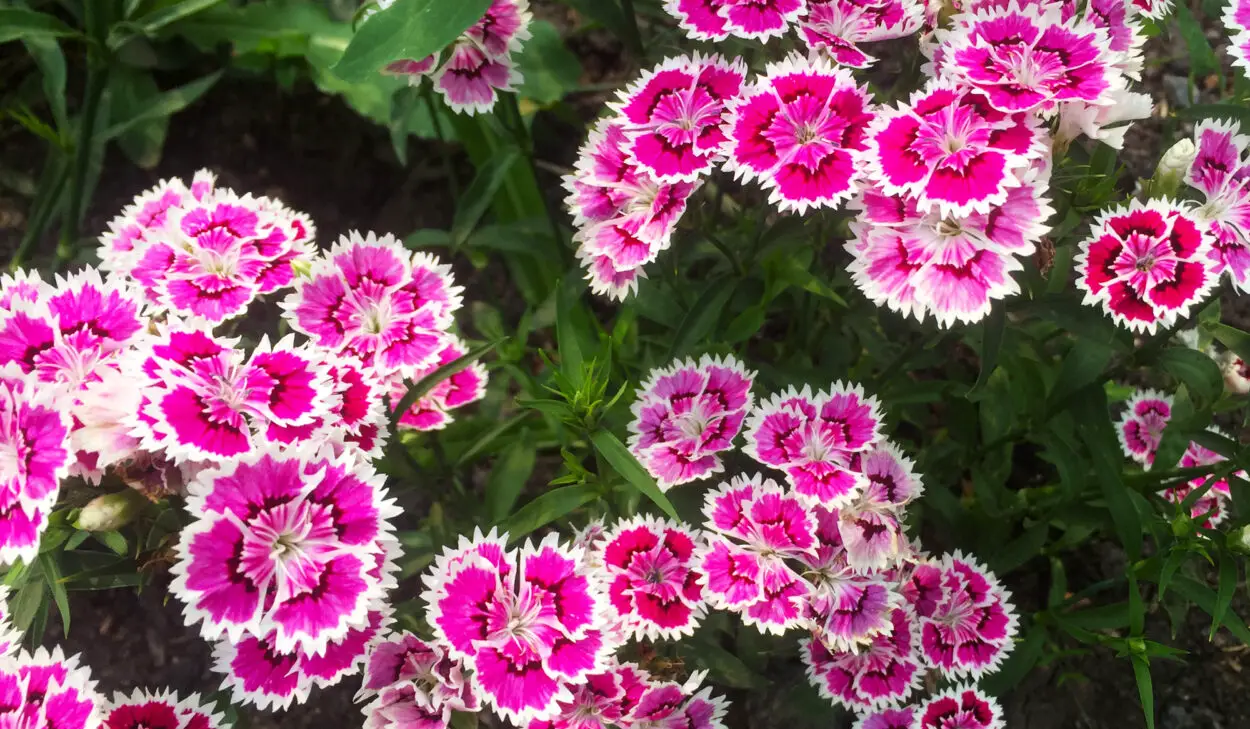
Let’s unravel the secrets of their growth, care, and nurturing without any further ado and discover the magic these M-starting flowers bring to horticulture.
Quickly Find Flowers That Start With M
1. Missouri Evening Primrose (Oenothera macrocarpa)
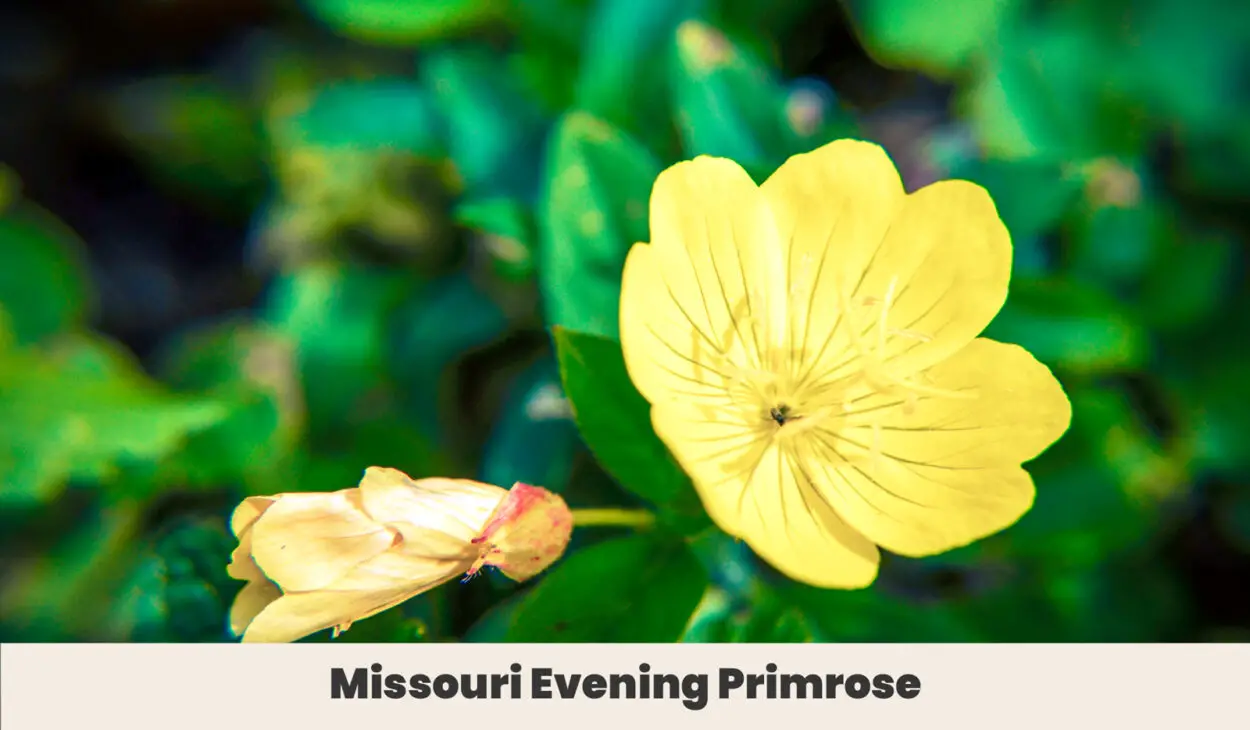
The Missouri Evening Primrose has striking yellow flowers. These flowers open in the evening, releasing a delightful fragrance.
It’s a hardy, drought-tolerant perennial with large, showy blossoms.
Plant the Missouri Evening Primrose near a seating area in your garden, and let the fragrant blooms of this plant create a serene ambiance for your evening relaxation.
| Botanical Name: | Oenothera macrocarpa |
| Growth Rate: | Moderate |
| Native Range: | North America |
| Hardiness Zones: | 4-9 |
| Soil Needs: | Well-drained, sandy or loamy soil |
| Exposure: | Full sun |
| Blooming Period: | Late spring to summer |
| Water Needs: | Drought-tolerant once established |
2. Miss Willmott’s Ghost (Eryngium giganteum)
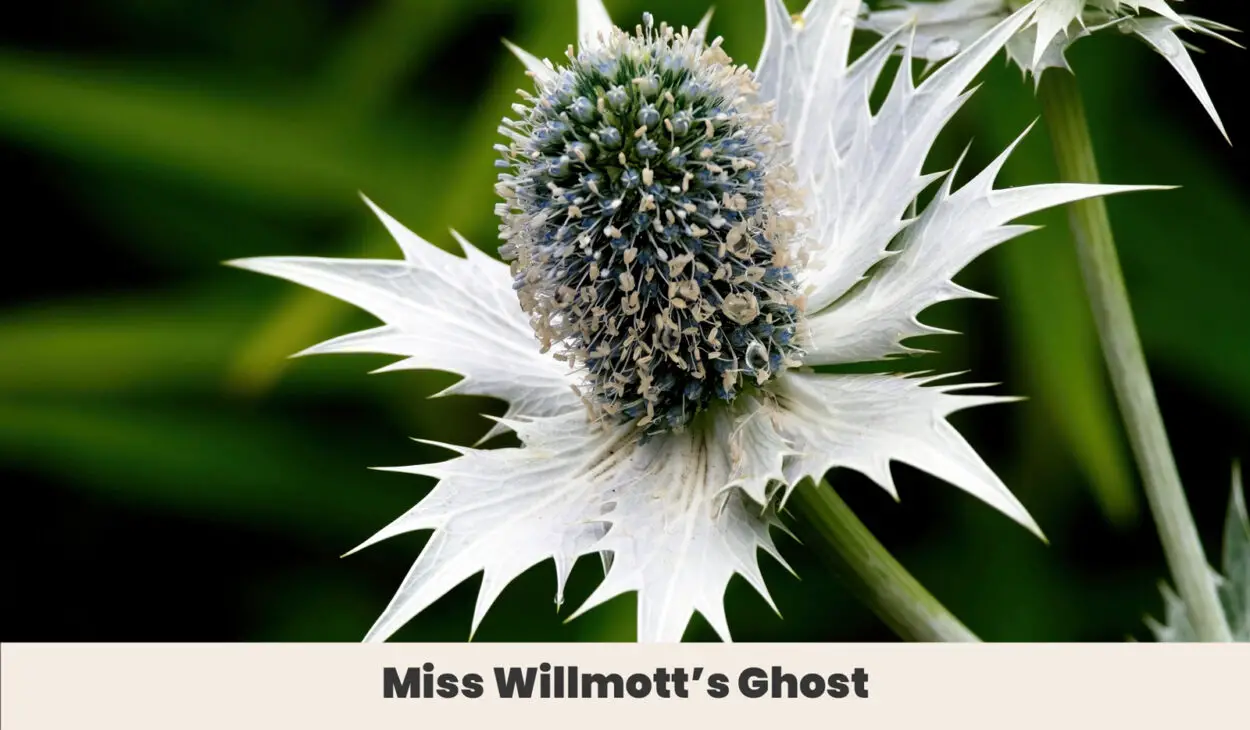
Miss Willmott’s Ghost is a captivating and enigmatic flower. This plant’s metallic, silver-blue spiky blooms can make any garden surreal.
Named after a well-known English gardener, it symbolizes mystery and intrigue.
Embrace the striking appearance of Miss Willmott’s Ghost by planting it alongside delicate, pastel-colored flowers for a captivating contrast that will steal the spotlight in your garden.
| Botanical Name: | Eryngium giganteum |
| Growth Rate: | Moderate |
| Native Range: | Southern Europe |
| Hardiness Zones: | 4-8 |
| Soil Needs: | Well-drained, sandy or loamy soil |
| Exposure: | Full sun |
| Blooming Period: | Summer |
| Water Needs: | Drought-tolerant once established |
3. Mazus (Mazus Reptans)
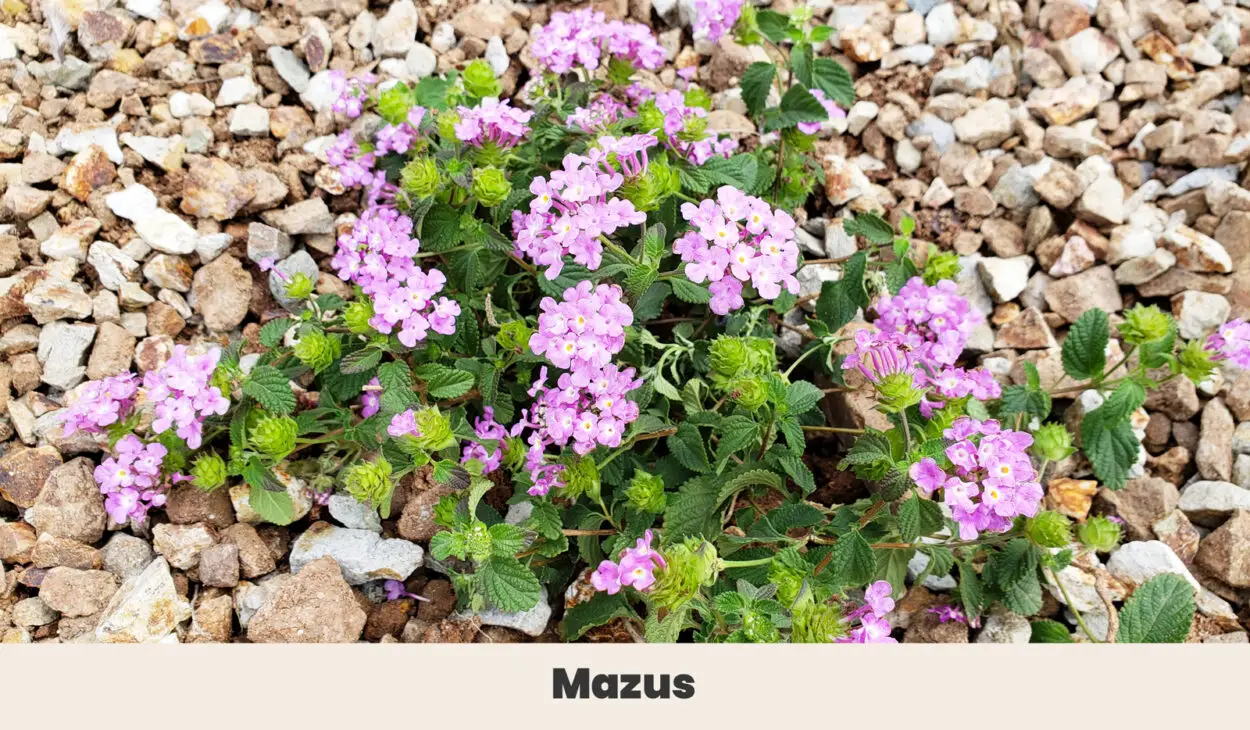
Mazus is a charming, low-growing perennial with petite, lavender flowers. It forms a dense carpet-like mat and thrives in moist soil.
This delicate beauty brings a touch of serenity to any garden or rockery.
Create a whimsical pathway in your garden by planting it between stepping stones. The low-growing foliage will create a precious carpet of vibrant blooms to guide your way.
| Botanical Name: | Mazus reptans |
| Growth Rate: | Fast |
| Native Range: | Asia, New Zealand |
| Hardiness Zones: | 4-8 |
| Soil Needs: | Moist, well-drained soil |
| Exposure: | Full sun to partial shade |
| Blooming Period: | Late spring to early summer |
| Water Needs: | Regular watering; prefers moist conditions |
4. Marvel of Peru (Mirabilis jalapa)
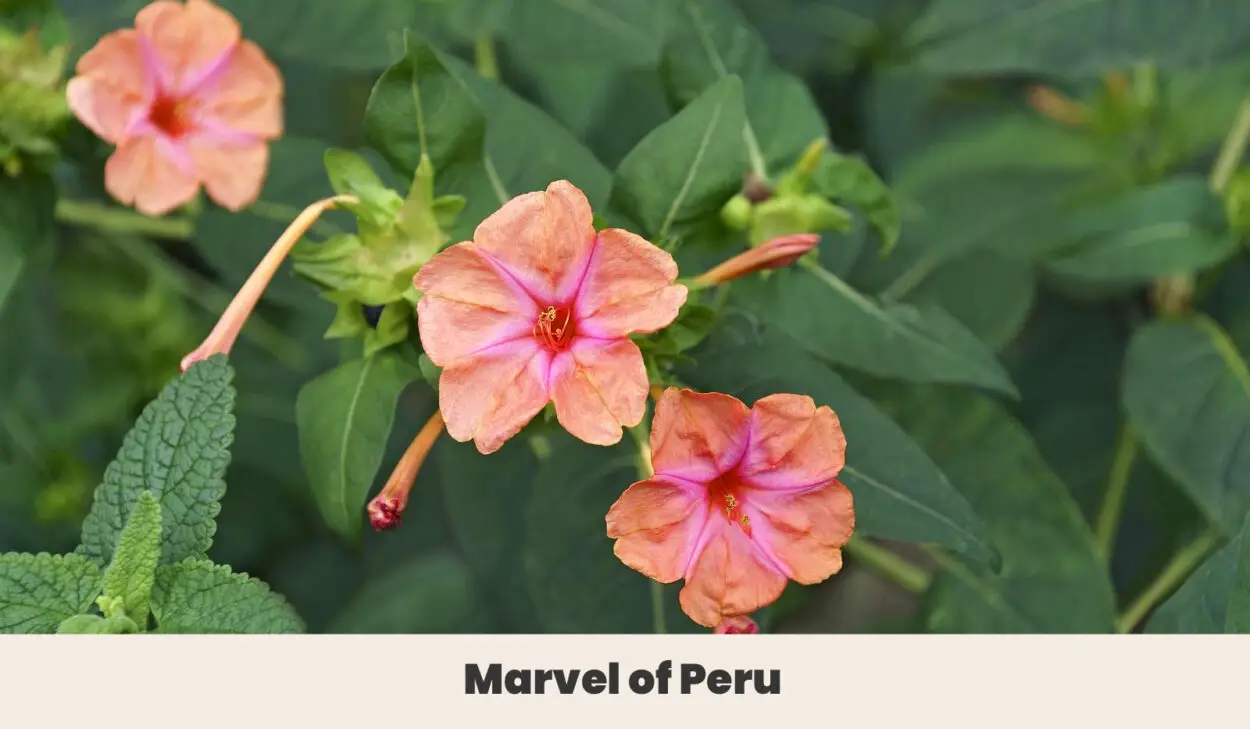
The Marvel of Peru is a fascinating flower with colorful blooms that open in the late afternoon. It displays a range of vibrant hues, including red, yellow, pink, and white. The trumpet-shaped flowers of this plant emit a sweet, captivating fragrance.
Plant it near a window where you can witness the amazing transformation of colorful flowers in the evening.
| Botanical Name: | Mirabilis jalapa |
| Growth Rate: | Fast |
| Native Range: | South America |
| Hardiness Zones: | 7-11 |
| Soil Needs: | Well-drained, fertile soil |
| Exposure: | Full sun |
| Blooming Period: | Summer to fall |
| Water Needs: | Moderate watering, avoid overwatering |
5. Maiden Pink (Dianthus Deltoides)
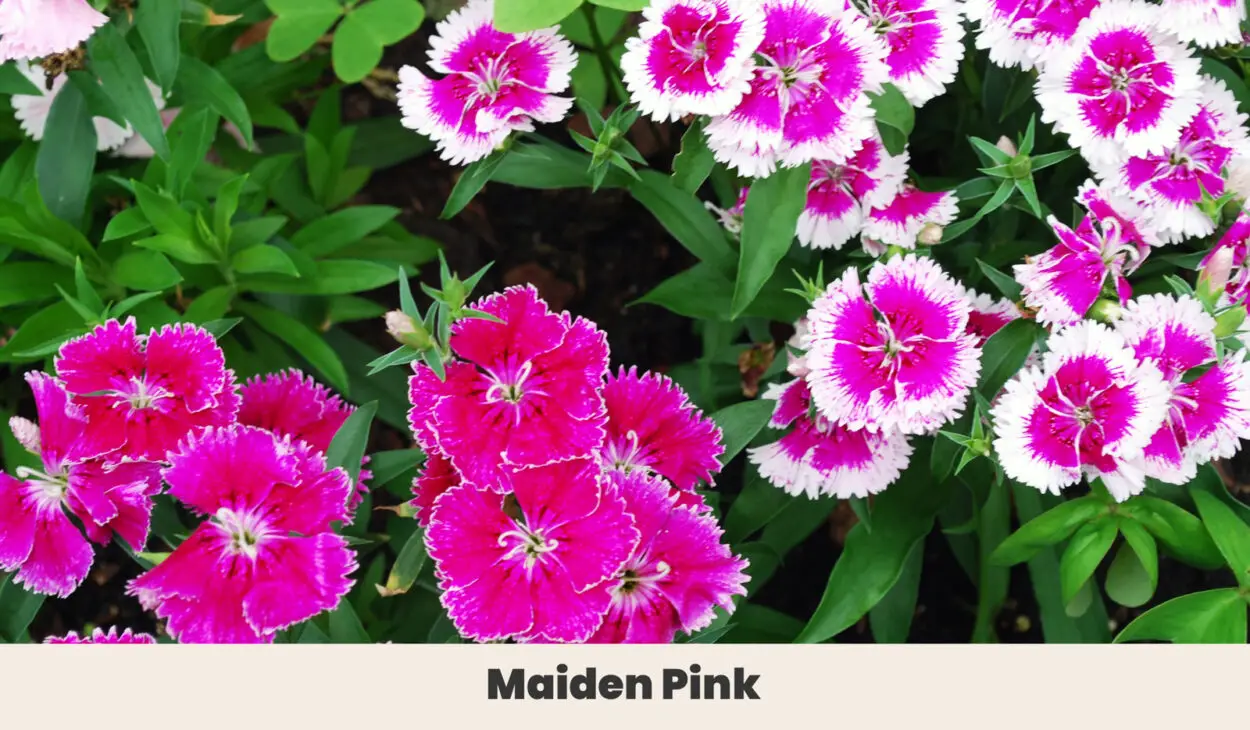
The Maiden Pink is a dainty perennial with delicate, deep pink flowers.
The name of this plant originates from the belief that maidens wore the flower as a symbol of their purity and innocence. It adds a touch of grace to any garden.
You can plant it near a cozy seating area to relax and enjoy the beauty of the elegant petals and sweet scent.
| Botanical Name: | Dianthus deltoides |
| Growth Rate: | Moderate |
| Native Range: | Europe, Asia |
| Hardiness Zones: | 3-8 |
| Soil Needs: | Well-drained, alkaline soil |
| Exposure: | Full sun |
| Blooming Period: | Late spring to summer |
| Water Needs: | Drought-tolerant once established |
6. Meadow Rue (Thalictrum Delavayi)
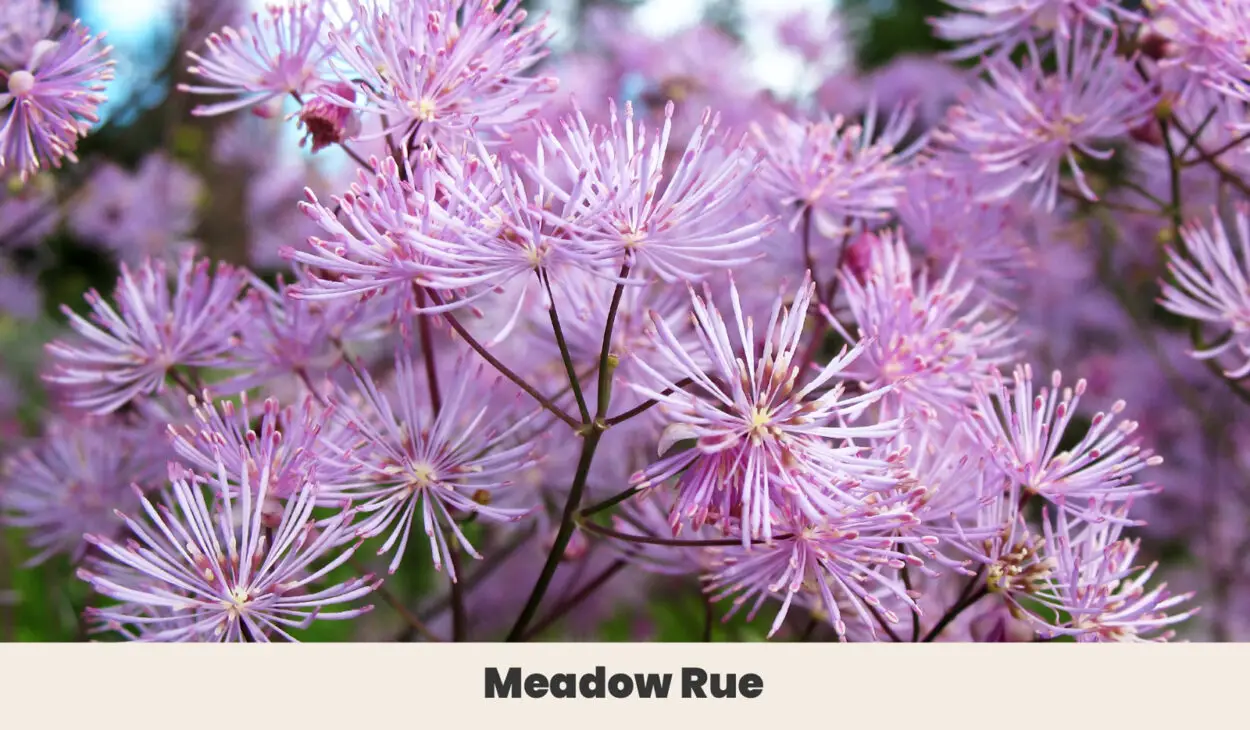
Meadow Rue is a graceful perennial with feathery purple clusters of purple flowers. The airy appearance of this plant gives it a graceful quality, making it a favorite in cottage-style gardens.
Let the lovely Meadow Rue dance in the breeze by planting it where it can sway gently, making your garden look magical.
| Botanical Name: | Thalictrum delavayi |
| Growth Rate: | Moderate |
| Native Range: | China, Tibet |
| Hardiness Zones: | 5-8 |
| Soil Needs: | Moist, well-drained soil |
| Exposure: | Partial shade to full sun |
| Blooming Period: | Summer |
| Water Needs: | Regular watering; prefers evenly moist soil |
7. Million Bells (Calibrachoa)
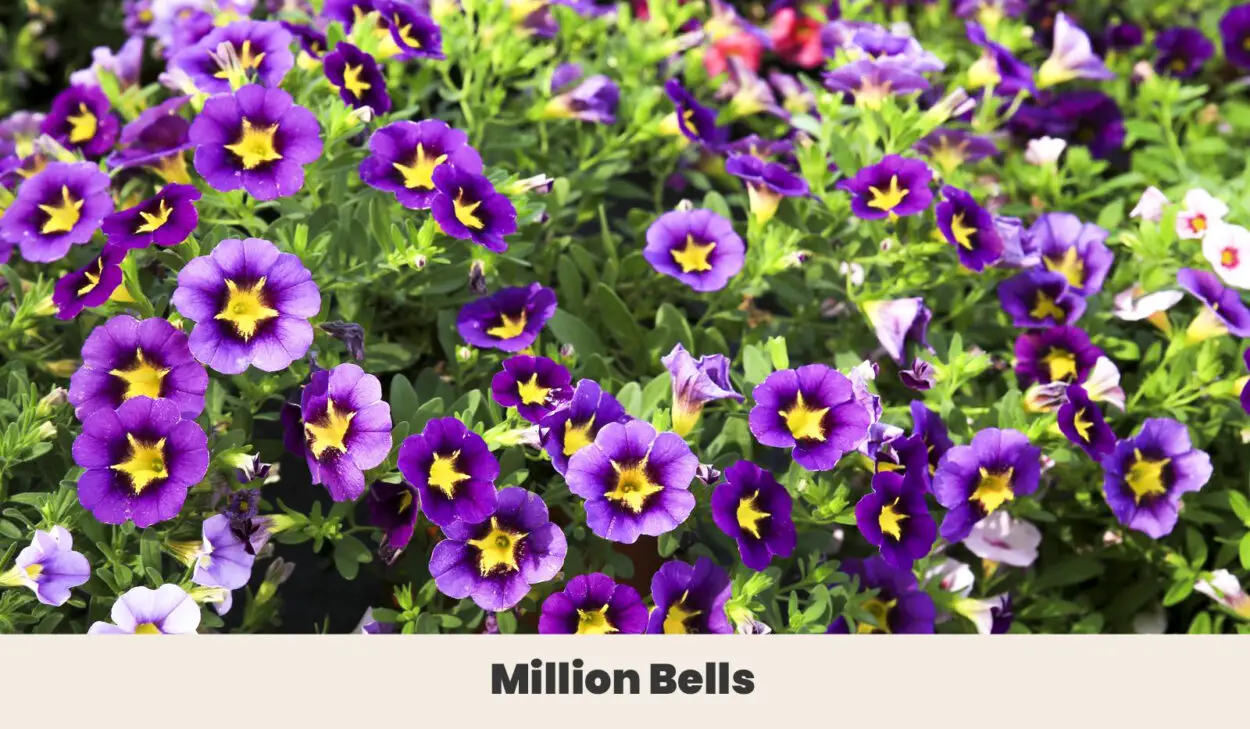
The Million Bells plant is a profusion of miniature bell-shaped flowers in various vibrant colors. It cascades beautifully from hanging baskets and containers, creating a stunning floral display throughout the summer.
You can create a vibrant hanging basket or cascading display of Million Bells. Let this charming flower spill over the edges, transforming dull space into a cascading waterfall of colorful blooms.
| Botanical Name: | Calibrachoa |
| Growth Rate: | Fast |
| Native Range: | South America |
| Hardiness Zones: | 9-11 |
| Soil Needs: | Well-drained, fertile soil |
| Exposure: | Full sun to partial shade |
| Blooming Period: | Spring to fall |
| Water Needs: | Regular watering; keep soil evenly moist |
8. Mexican Fire Barrel (Ferocactus Pilosus)
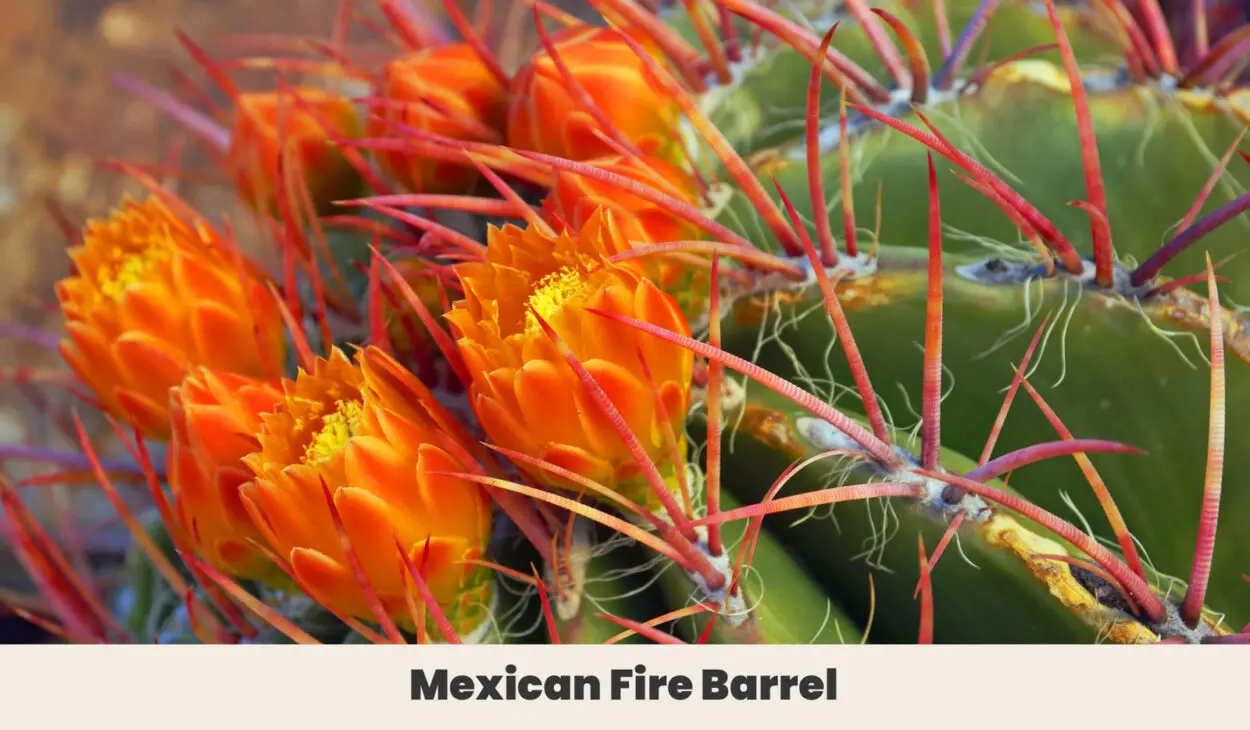
The Mexican Fire Barrel cactus stands tall and proud in arid landscapes. This plant’s cylindrical shape and vibrant red spines create a striking appearance to the tight clusters of orange flowers.
It represents resilience and adaptability in harsh environments.
Embrace the fiery spirit of the Mexican Fire Barrel by planting it as a focal point in a desert-themed garden. This plant’s unique shape and vibrant spines can add a touch of intrigue and adventure anywhere.
| Botanical Name: | Ferocactus pilosus |
| Growth Rate: | Slow |
| Native Range: | Mexico |
| Hardiness Zones: | 9-11 |
| Soil Needs: | Well-drained, sandy soil |
| Exposure: | Full sun |
| Blooming Period: | Spring to summer |
| Water Needs: | Drought-tolerant, sparingly watered |
9. Mexican Bush Sage (Salvia leucantha)
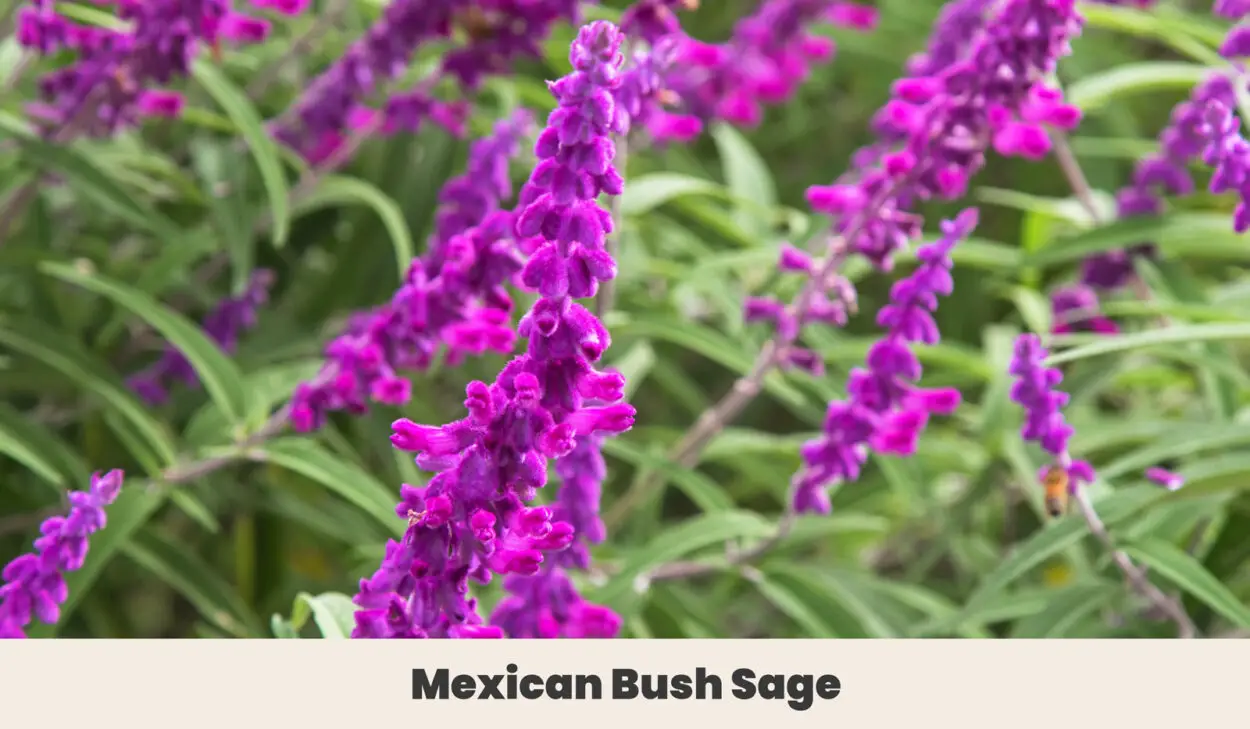
The Mexican Bush Sage is a stunning perennial with velvety purple flowers and silver-gray foliage. The vibrant and attractive blooms can embellish your garden borders while attracting pollinators that will bring your outdoor oasis alive.
| Botanical Name: | Salvia leucantha |
| Growth Rate: | Fast |
| Native Range: | Mexico, Central America |
| Hardiness Zones: | 8-11 |
| Soil Needs: | Well-drained, fertile soil |
| Exposure: | Full sun |
| Blooming Period: | Late summer to fall |
| Water Needs: | Regular watering; prefers evenly moist soil |
10. Monkshood (Aconitum Napellus)
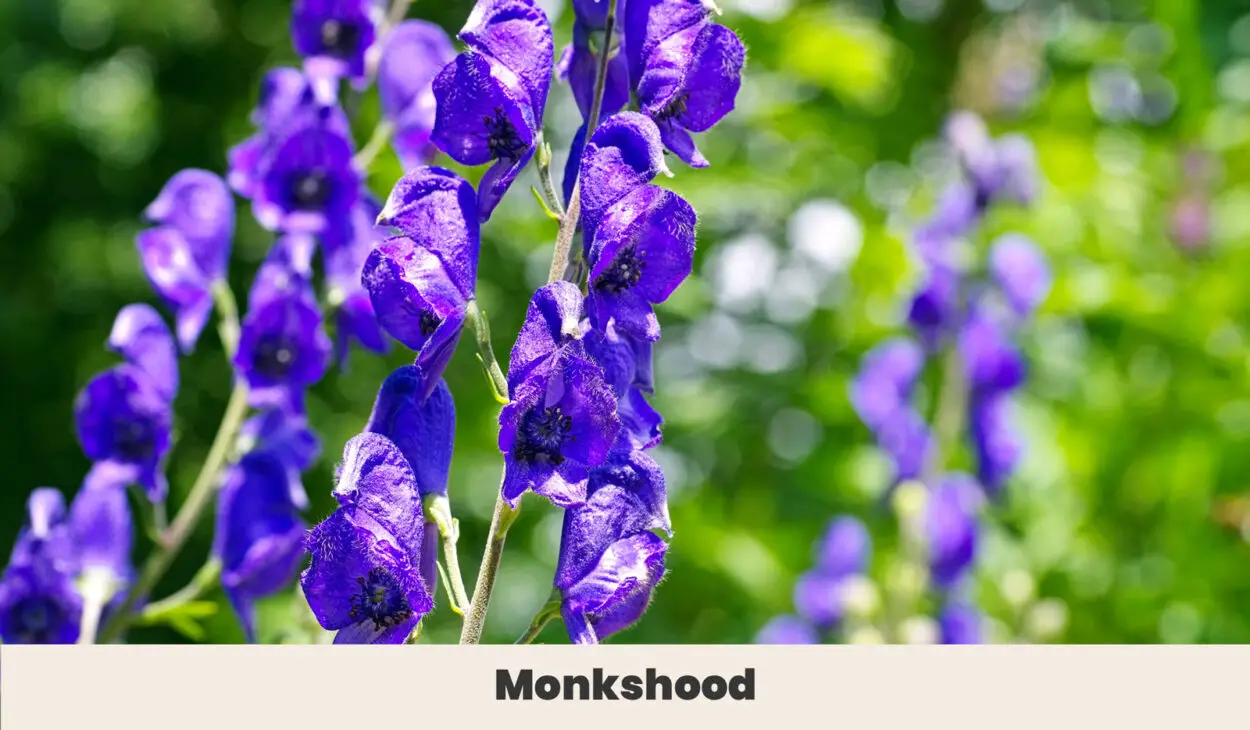
Monkshood is a mysterious and alluring flower with hood-like blue or purple petals on tall stalks. The historical significance of this plant is associated with medieval monks who used it as a herbal remedy.
| Botanical Name: | Aconitum napellus |
| Growth Rate: | Moderate |
| Native Range: | Europe, Asia |
| Hardiness Zones: | 3-7 |
| Soil Needs: | Moist, well-drained soil |
| Exposure: | Partial shade to full sun |
| Blooming Period: | Summer |
| Water Needs: | Regular watering; prefers evenly moist soil |
11. Musk Mallow (Malva moschata)
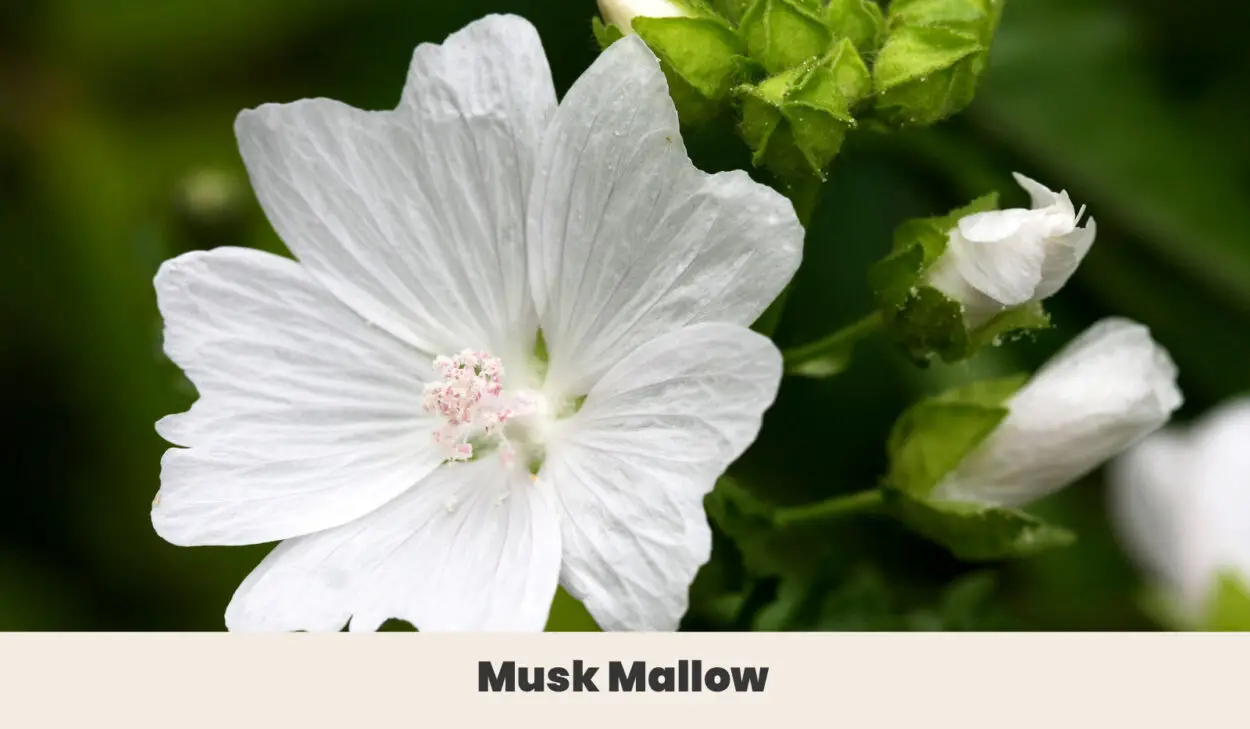
Musk Mallow gifts pale pink or white blossoms and a subtle musky fragrance. This plant has medicinal properties, so it’s been cultivated for centuries.
It’s a symbol of gentle beauty and healing.
Make your garden more romantic by planting Musk Mallow near a rustic wooden bench. This plant’s elegant blooms and subtle scent will take you back to idyllic country meadows.
| Botanical Name: | Malva moschata |
| Growth Rate: | Moderate |
| Native Range: | Europe, Asia |
| Hardiness Zones: | 4-8 |
| Soil Needs: | Well-drained, fertile soil |
| Exposure: | Full sun to partial shade |
| Blooming Period: | Summer |
| Water Needs: | Moderate watering; prefers evenly moist soil |
12. Mock Orange (Philadelphus)
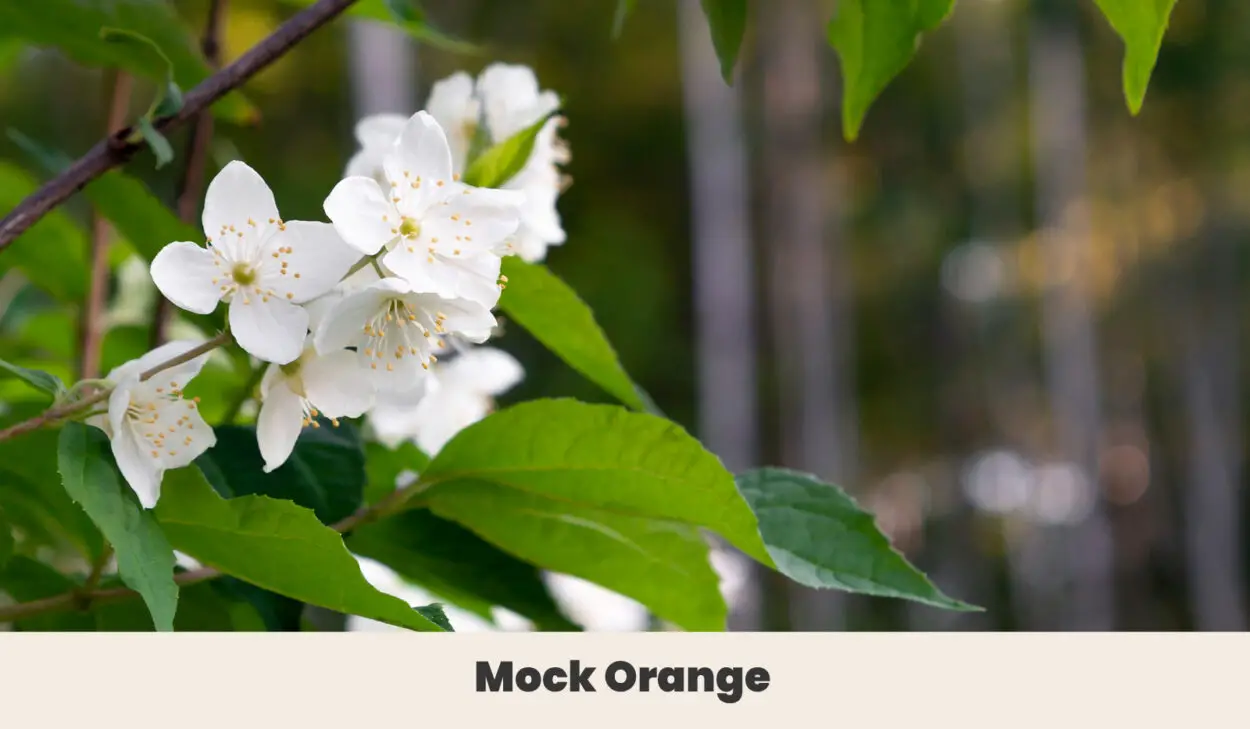
Mock Orange provides fragrant white flowers resembling those of orange blossoms. Despite the name, this plant isn’t related to citrus plants.
It symbolizes purity and is famous for bridal bouquets and garden borders.
Welcome a burst of citrusy fragrance into your garden by planting Mock Orange near your patio or outdoor seating area. This creates a delightful sensory experience that will take you to a sunny citrus grove.
| Botanical Name: | Philadelphus |
| Growth Rate: | Fast |
| Native Range: | Europe, North America, Asia |
| Hardiness Zones: | 4-8 |
| Soil Needs: | Well-drained, fertile soil |
| Exposure: | Full sun to partial shade |
| Blooming Period: | Late spring to early summer |
| Water Needs: | Regular watering; prefers evenly moist soil |
Final Thoughts
As we conclude our expedition through these gorgeous M-starting flowers, we hope you’ve been inspired by their beauty and intrigued by their cultivation.
With the knowledge and creativity gained, you can now embark on your botanical adventure, cultivating a garden that radiates the splendor of these magnificent blooms.
May your garden flourish with the vibrant colors, delicate fragrances, and inherent charm that these flowers possess.
Embrace the joy of gardening and revel in the magic of these flowers that start with M.

